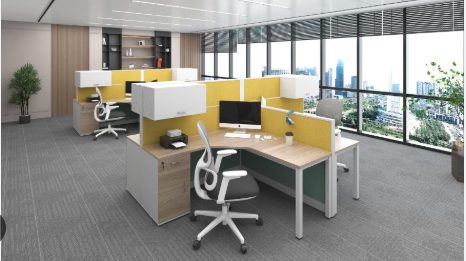The Science Behind Office Chairs and Their Effect on Collaboration

The role of office chairs in the workplace goes far beyond mere comfort; they are fundamental to promoting effective collaboration. Understanding the science behind how different chair designs influence interaction and teamwork can help businesses make informed choices when it comes to office furniture. The right office chairs not only support physical well-being but also foster an environment conducive to communication, cooperation, and productivity.
The Ergonomics of Collaboration
Ergonomics refers to the design of products and environments to fit the people who use them. Office chairs that are ergonomically designed can improve posture, reduce discomfort, and ultimately support better physical health. This foundation is essential for effective collaboration, as employees who feel comfortable are more likely to engage openly with their colleagues. Research has shown that when employees are physically at ease, their cognitive function improves, allowing for clearer thinking, better problem-solving, and more effective communication.
How Chair Design Affects Team Dynamics
The design of office chairs plays a significant role in how team members interact during meetings or group projects. Chairs that are adjustable in height, backrest angle, and armrests allow individuals to customise their seating to their liking. This flexibility supports both collaborative discussions and independent work by accommodating different seating preferences and postures.
For collaborative tasks, chairs with a swivel function or rolling wheels make it easier for team members to move around and engage with others in a dynamic setting. This mobility facilitates a more fluid exchange of ideas and helps maintain an energetic atmosphere, which is especially important in brainstorming sessions or workshops.
The Impact of Open vs. Closed Seating
Office chairs can influence whether a workspace is open and inviting or closed and restrictive. Chairs that are designed to face each other, or that can easily be repositioned, support open communication by making eye contact and non-verbal cues more accessible. On the other hand, chairs that are fixed in place and face away from each other can contribute to a sense of isolation, making it harder for team members to feel connected.
Adjustable chairs with a swivel and tilt function allow for more comfortable body language, encouraging participants to engage with each other without strain. This contributes to more active listening and participation during discussions, as individuals can maintain a natural line of sight and adapt their posture as needed.
Office Furniture and Collaborative Workspaces
In collaborative work environments, the overall office furniture layout is just as important as the chairs themselves. Furniture designed for group interaction—such as chairs with low backs or flexible armrests—helps create an environment that feels less hierarchical and more inclusive. This type of seating encourages individuals to gather in a circle or around a table, breaking down traditional barriers and promoting a more democratic exchange of ideas.
Office chairs with integrated features like built-in desks or tablet arms can support collaborative tasks without requiring additional furniture pieces, making the space more versatile and conducive to teamwork. Having a functional workspace with properly designed office furniture can also help in avoiding clutter and distractions that may hinder team effectiveness.
The Role of Chair Comfort in Productivity and Collaboration
Comfort is often cited as a critical component of collaboration. Office chairs that prioritise comfort and support reduce fatigue, which in turn leads to higher levels of participation. When individuals feel well-supported, their focus shifts more to the task at hand rather than physical discomfort. This allows for longer, more productive collaborative sessions.
Studies have found that people are more willing to contribute their ideas in an environment where they are physically comfortable. As discomfort builds, concentration wanes, and collaborative sessions can suffer as a result. Chairs designed with cushioning, breathability, and adjustable features help mitigate these issues, ensuring that employees can remain engaged and active throughout discussions.
The Psychology of Seating Arrangements
Seating arrangements can influence the psychological dynamics of a meeting or work session. Chairs that promote eye contact and face-to-face interaction foster a sense of equality and inclusivity. These arrangements can lead to higher levels of trust and comfort, encouraging participants to share ideas freely. In contrast, chairs that create physical barriers or limit movement may reinforce traditional power structures and hinder open dialogue.
Chairs that are uniform in design and comfort help prevent biases and create a sense of fairness. When every participant is seated in a chair that provides equal support, it helps level the playing field, encouraging more balanced input from all members of a team.
Conclusion: Why Investing in Office Chairs Matters
Investing in quality office furniture that includes well-designed office chairs is more than just a matter of comfort; it is an investment in the collaborative culture of a workplace. Chairs that prioritise ergonomics, adjustability, and comfort create an environment that supports active participation and effective communication.
Selecting office chairs that facilitate open interaction and comfort ultimately pays off in the form of improved productivity, better teamwork, and stronger overall collaboration. By understanding the science behind office chair design and its impact on the workplace, organisations can create spaces that truly work for their people, encouraging them to come together and do their best work.





